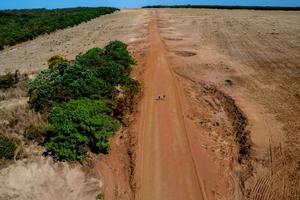Scientists at the University of Colorado, Boulder have created the first worldwide atlas of soil microbes, mapping 500 of the most common kinds of bacteria found in soil across the globe, from deserts to grasslands to wetlands.
“It is amazing how much we still don’t know about even the most dominant microorganisms found in soil,” Noah Fierer, co-author of the new study and a research fellow at CU Boulder, said in a statement. “Now that we have this list, we can really focus our research efforts to categorize these major groups and see where they are and what they do.”
For the study, which was published this week in the journal Science, researchers collected soil samples from 237 locations on six continents and in 18 countries. They then analyzed the microbes’ DNA to track similarities and differences and created a list of 500 bacteria that account for almost half of all soil microbes. They then used computer models to map the organisms’ predicted distribution and abundance.
“Most of the microorganisms that made our most-wanted list — they don’t have a species name,” Fierer told NPR. “They’re un-described.”
The work was done as part of the Earth Microbiome Project, a consortium of scientists from across the globe studying soil microbes.
The newly mapped organisms “probably play an important role, because they are dominant and ubiquitous,” Janet Jansson, a microbiologist at the Pacific Northwest National Laboratory in Washington and one of the leaders of the Earth Microbiome Project, told NPR. “So I think that’s what the next step has to be: Characterizing what they do, and how they are impacted by change — climate change, for example.”
For more on how climate change is impacting the world’s microbiomes, click here.



